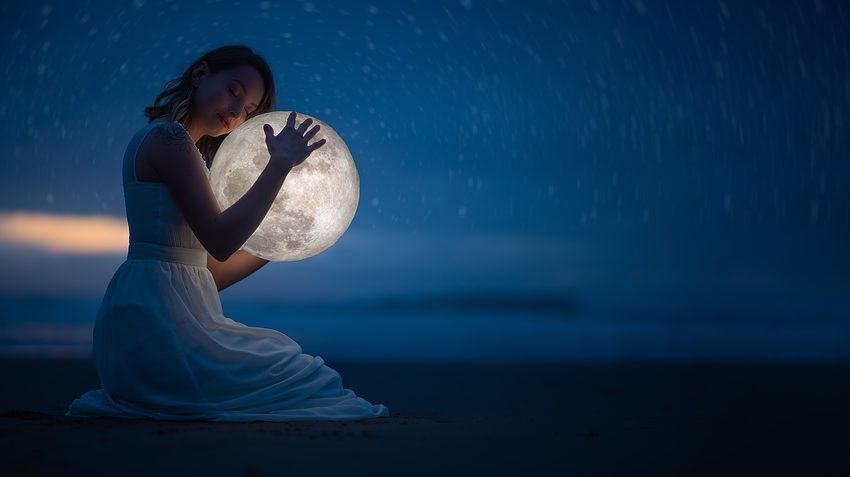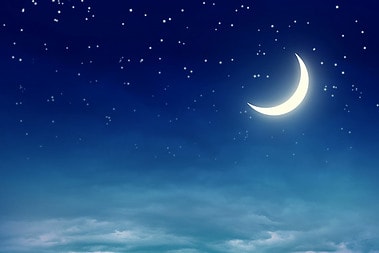Your sleep cycle is regulated by circadian rhythms which are triggered in most part by light received by your eyes and transmitted to your brain. So when it gets dark outside your brain tells you to go to sleep at night. How does this all work?
Table of Contents
Why do we sleep at night?
Since the dawn of time we have adapted to sleeping at night and spending our waking hours during the daytime. Your body begins a number of changes when it becomes dark in order to feel drowsy and fall asleep. These changes are ruled by your circadian rhythm.
What is Circadian rhythm?
Circadian rhythms are natural changes in your mental state, your body, and your behavior that follow a cycle, usually 24 hours. You feel it as your biological clock.
These circadian rhythms regulate your sleep cycle because you have certain genes that cause proteins to build up in cells when it gets dark and reduces them when it turns light.
As these proteins build up it causes changes in your brain and your body to affect your mood or behavior by making you feel sleepy or awake.
What makes you sleepy when it gets dark?
Two things make up our sleep cycle and work to make us sleepy. Sleep drive and circadian rhythm. Sleep drive is a cumulative build up that starts when we wake and grows until we go back to sleep. This is why we can feel more tired late in the day.
The longer we are awake the stronger the drive to go back to sleep. Circadian rhythm is the side of things that responds to falling darkness.
When it gets dark your pineal gland converts serotonin to melatonin and releases it into your blood stream. This hormone acts on neurotransmitters in your brain to turn off signals that keep you awake and you begin to feel sleepy.
This begins about 2 hours before you go to sleep. At this same time your body core temperature, which has a 24-hour cycle, begins to drop which is an additional signal for your body to wind down to sleep.
The timing is all part of your biological master clock with the main trigger being the amount of light you receive.
How does sunlight affect sleep?
Sunlight is the strongest influence that affects your sleep wake cycle. With that in mind, your internal clock, (circadian rhythm), has certain periods of time when you’re more sensitive to the light triggers that regulate your sleep cycle. These occur:
- about one hour after your normal waking time – use bright light to be alert for your day
- again about 2 hours before the normal time you go to bed – dim the lights to become drowsy and fall asleep easily
- all through the night – keep light dim if you wake so you can fall back asleep
Bright light tells your brain that it’s time to be awake. So if you feel sleepy too early making the lights bright can help to wake you up and fall asleep later in the evening.
If you want to go to sleep earlier then, you should dim the lights 2 hours before bedtime to tell your brains that it’s time to sleep and help you feel drowsy.
By getting bright light soon after you wake up it can help you feel more alert when you should be. This can improve your sleep schedule by getting enough sunlight or bright light during the day and making it darker at night.
How do you make it dark so you can sleep?
This can be particularly difficult if you work nights and need to sleep during the day.
Light can come from a number of sources that you may not think about. I’m sure you have heard repeatedly to remove electronics because of the blue light emitted from the screens.
But, the power buttons and indicators also give off a lot of light at night and can light up a room even when the devices are turned off.
Alarm clocks, the switches on power strips for your plugs, answering machines, computers and pop up notifications that cause your cell phone to light up unexpectedly are all sources that create enough light in your room to disturb your sleep or keep you from falling asleep easily.
So here are my tips for making your room dark so you can sleep:
- remove or cover all electronic devices – in a perfect world they should be removed but in some cases such as power strips I cover the indicator light if I can’t remove it.
- use blackout curtains to cover windows – this usually has the added benefit of reducing your heating and cooling bill also.
- cover your eyes – a sleep mask can help when you can’t reduce all the light in the room itself.
- cover the cracks – a lot of light can find it’s way under your bedroom door. Use a rug our roll up a towel to block it out.
Conclusion
At the end of the day…. you want it to be dark so you can fall asleep easily. Work with your natural body clock by getting enough of sunlight during the day and dimming the lights at home 2 hours before bedtime.
And remember to eliminate all those disruptive light sources in your bedroom to sleep through the night. Even a little light can disturb your sleep.
Does this information leave you in the dark? Leave a comment below….
Until next time,
Goodnight!
The information in today’s post is for educational and informational purposes only and is not intended to be a substitute for professional medical advice, diagnosis, or treatment. When you have questions regarding your health you should seek the advice of your health care provider.
references
Why do humans and many other animals sleep?
https://www.ncbi.nlm.nih.gov/books/NBK11108/#:~:text=From a perspective of energy,other animals sleep at night.
Effects of light on circadian rhythms
https://www.cdc.gov/niosh/emres/longhourstraining/light.html#:~:text=Bright light in the evening,area to feel more awake.
National Institute of General Medical Sciences – circadian rhythms
https://nigms.nih.gov/education/fact-sheets/Pages/Circadian-Rhythms.aspx
Melatonin, the Hormone of Darkness: From Sleep Promotion to Ebola Treatment

